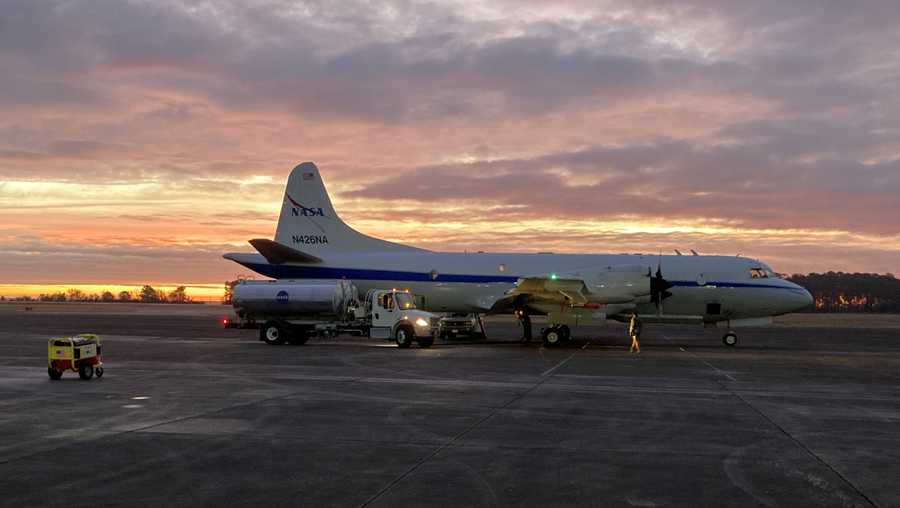If you see low-flying aircraft in July, it could be NASA
NASA plans to fly aircraft over the Interstate 95 corridor from Washington to Baltimore and into Virginia.
The flights will support an atmospheric study in the Mid-Atlantic region between July 5 and 16. Four-engine turboprop P-3 aircraft based at NASA's Wallops Flight Facility in Virginia will fly five days during the 12-day period at altitudes from 1,000 to 10,000 feet.
Each flight will include one low-level pass at 1,000 feet over I-95, two spiral tracks, ascending and descending, over Baltimore, and one spiral track over Greenbelt, Prince George's County.
The flights will make additional passes over the Chesapeake Bay and one spiral track over Hampton, Virginia.
The P-3, labeled NASA P-3 (N426NA), can be tracked in real-time at the NASA Airborne Science Program Tracker. Flight updates will also be available on the Wallops Facebook and Twitter pages.
The day before a flight, Wallops will post the estimated time the P-3 aircraft will fly over the I-95 corridor and Hampton.
The planes will carry instruments that collect atmospheric data over urban and rural areas in addition to vegetation and water to support a variety of scientific projects.
The flights are part of the Students Airborne Science Activation (SaSa) program coordinated by the NASA Ames Research Center in Moffett Field, California.


